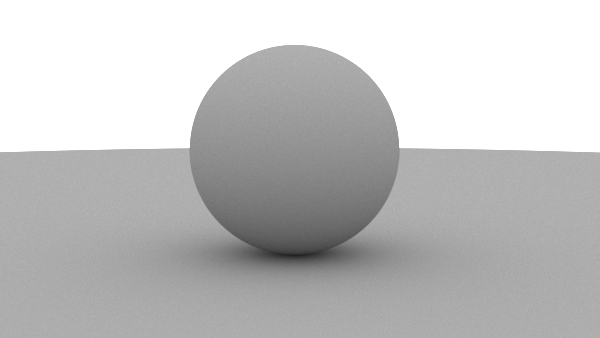
Ambient Occlusion is a calculation that takes any particular point
in a 3d scene and figures out how occluded this point is by the objects
around it.
Many 3d renderers use Ambient Occlusion as part of its Skylight
calculation. A Skylight (also sometimes called a Domelight) is
a light emitted from a sphere or dome around your scene (like the real
sky), and then after the
ambient occlusion value is calculated for a point, the light value is
multiplied by the occlusion value to give you the final light
intensity. The result is an evenly lit scene with
soft shadows (or darkening) in cracks and crevices and under objects,
much like how shadows look on a cloudy day.
Here's a render using a white Skylight with
no other light source.

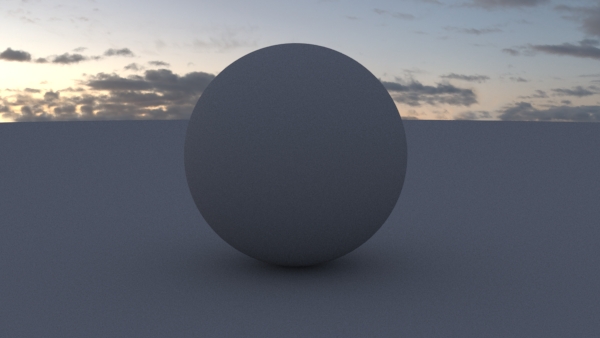
To use Skylight in many renderers is as simple as adding a skylight
and choosing an HDRi as your bitmap, but it's always a good idea to
have
some idea what's going on under the hood, so this tutorial is just a
brief discussion on how ambient occlusion is
calculated, and what this does visually to an image when applied to
your skylight.
How Ambient Occlusion Is Calculated
First, lets pick a point we'd like to render. Lets call this
point A. Next, the renderer shoot out a number of rays from A in a
hemispherical
direction around the face normal (since it's a ground plane, the face
normal is pointing up), and it see how often
these rays are occluded by nearby objects. So in this example, we shoot
out 5 rays (in a real render we generally shoot way more than 5 rays,
but I'm
choosing 5 for simplicity). Rays 1, 2 and 3 do not hit any object on
their way up to the hemisphere. Rays 4 and 5 hit a nearby object (the
sphere), and
so these rays are occluded. So in this image, we shot out 5 rays,
and 2 are occluded, so our ratio of occluded rays vs total rays is 2/5.

Now lets look at point B, which is closer on our plane to our
sphere. We shoot again 5 rays, ray 1 and 2 are not occluded by
anything, 3,
4 and 5 hit the sphere and so are occluded. So this point is given a
value of 3/5.

Now imagine doing this again and again, point after point on the
ground plane. For each
point we take the ratio of occluded rays over the total number of rays.
The closer this value is to 0, the less it's occluded, the closer to 1,
the more occluded it
is. So in the example above, point A would be closer to black (less
occluded), point B would be closer to white (more occluded).

In our 3d
world, that gives us the following image...
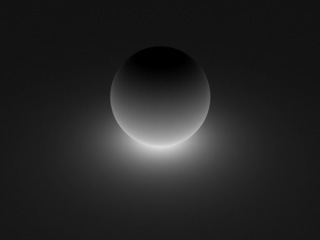
Now multiply the light intensity of our Skylight (lets say the
skylight color is a desaturated blue) by the inverse of the ambient
occlusion
image, and we get
the expected skylight image.
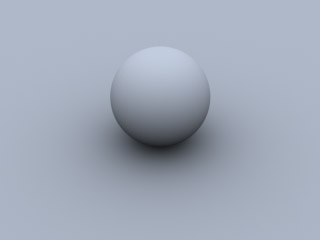
So next time you're doing an outdoor scene, I highly recommend a
little skylight (as well as some other lights, such as a bright yellow
directional light for your sun) to make the image more realistic.
Note: the actual math behind implementing this technique is far
more complex, and each renderer does it a slightly different way, but
this should give you the basic idea.
Also note, renderers that include a "skylight" but not an "ambient
occlusion shader" generally do not include a maximum distance value in
their ambient occlusion calculation, which specifies a cutoff value for
how far to shoot the ray before declaring it's a non occluded ray. This
is useful for doing ambient occlusion indoors. But since a skylight is
supposed to be a simulation of a sky, and not a more general purpose
ambient occlusion shader, many do not include this feature. This causes
some confusion between what a skylight does, and what ambient occlusion
is. So as a rule of thumb, a skylight is a light that includes an
ambient occlusion calculation generally with no max dist parameter,
whereas an ambient occlusion shader just provides an occlusion image
with no light, and generally has options such as a max dist value.
For example, here's a skylight in vray in 3dsmax...
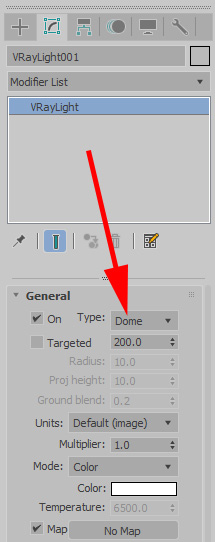
And here's a vray occlusion shader inside 3dsmax...
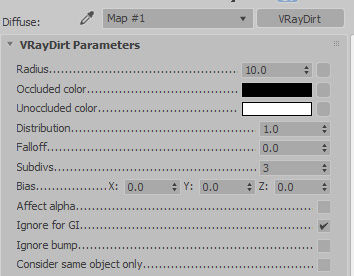
Ideal of course is to have both abilities in your 3d application.